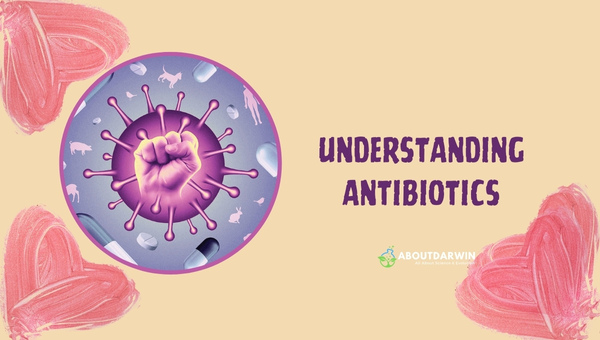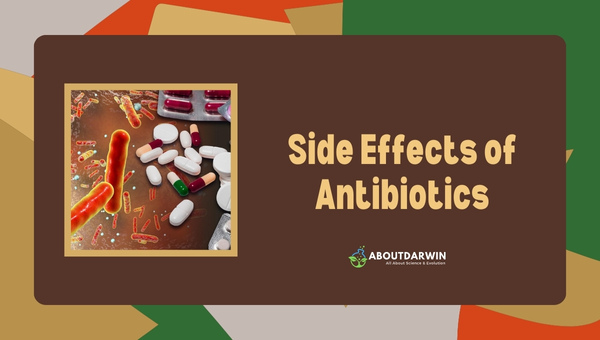Physical Address
304 North Cardinal St.
Dorchester Center, MA 02124
Welcome to our comprehensive guide on antibiotics – those mighty microbial fighters! You might have encountered them when you were battling a bacterial infection, or perhaps you heard about them in a conversation.
Either way, in this guide, we’ll dive deep into what antibiotics actually are, how they work, their various types, and much more.
Have you ever wondered why your doctor strictly advises finishing the entire course of your antibiotic prescription? Or why antibiotics are ineffective against viral infections like the common cold or flu?
Besides answering these important questions, we also discuss the misuse of antibiotics and its repercussions. Get ready for an insightful journey through this complex yet intriguing world of medicine.
Contents
At the core of modern medicine, antibiotics are powerful drugs that fight bacterial infections. Named for their “anti-life” (against bacteria) properties, antibiotics have been utilized since the 20th century to cure many once-lethal diseases.

Their discovery marked a pivotal moment in human history, transforming how we deal with bacterial illnesses.
Delving into the specifics, there are different types of antibiotics – each designed to combat varied species of bacteria. This vast array encompasses broad-spectrum antibiotics capable of tackling multiple types simultaneously and narrow-spectrum ones that target specific bacteria.
Understanding these subclasses is crucial for safe and effective usage. Let’s journey further into how these life-saving medicines perform their task.
So, what exactly are antibiotics? Essentially, they are compounds that kill or inhibit the growth of bacteria. Discovered accidentally by Alexander Fleming in 1928, antibiotics have since revolutionized our approach to combating bacterial diseases.
Initially, it started with penicillin – the first antibiotic to save countless lives during World War II- and continues today with a far broader range of advanced varieties.
What is their role in modern medicine? Simply put, it is indispensable. Ever since their introduction, antibiotics have been working behind the scenes, combating everything from strep throat to life-threatening conditions like sepsis.
These wonder drugs have not only increased our lifespan but also improved the quality of life by making previously lethal infections treatable. And although we may take their presence for granted now, remember it wasn’t always this way!
Surprisingly, not all antibiotics are the same. They come in different types, each designed specifically to fight varied bacteria or bacterial activities. Let’s try to demystify this diversity.
Each type targets bacteria differently – some interfere with the cell wall synthesis of bacteria while others hamper their protein or DNA synthesis. Understanding their differences helps guide suitable treatment pathways. So next time you see that prescription from your doctor, you know there’s more to it than just the name of the medicine!
Also Read: How the Ebola Virus Replicates? A Comprehensive Analysis
Have you ever pondered over the process that takes place inside your body when you pop an antibiotic pill? Though it might seem complicated, the working principle of antibiotics is based on attacking the lifelines that bacteria rely on to thrive and multiply.
At a fundamental level, these medications are designed to target bacterial functions crucial for their survival.
Some antibiotics destroy bacterial cell walls, causing them to burst; others halt their protein synthesis mechanism or disrupt their DNA replication process. Astonishing is how these tiny pills work so meticulously to make us feel better!
Getting a bit more scientific here, it’s fascinating to understand the biological mechanisms through which antibiotics mount their defense. Let’s break it down according to the different strategies:
Though these actions might seem hostile, remember they are precisely targeted at harmful bacteria in our body, sparing our healthy cells! It makes you appreciate these little antibiotics a tad more, right?
Antibiotics are not candies you take to soothe a scratchy throat. They are potent drugs meant specifically to treat bacterial infections. So, when is the right time to use them? The answer is not as simple as we would like.
Here are some key points about their appropriate usage:
Remember that while antibiotics can be lifesavers, their misuse could also contribute to the growing problem of antibiotic resistance – which we’ll delve into later.
Also Read: GenomicsEducation Merger: Now Part of GenealogyExplained
In this era of quick-fix solutions, it’s all too common to reach out for an antibiotic at the first sign of illness. However, misusing these powerful drugs can lead to serious consequences, both for our individual health and global public health more generally.
Let’s shed light on some risks associated with antibiotic overuse:
Keeping these concerns in mind can help prevent dangerous misuse and ensure that antibiotics continue to safeguard our health as they were intended. Let’s pledge a safer antibiotic consumption regime!
Just like any other medication, antibiotics also come with their share of side effects. While most are generally mild and go away on their own, it’s crucial to be aware of what you might experience when taking these medications.

Here are some common side effects that you could encounter:
Despite these shortcomings, remember that antibiotics play a pivotal role in managing bacterial infections. Always have a candid discussion with your healthcare provider about potential side effects before starting any new medication.
Also Read: Understanding Your Brother’s Wife Role: A Comprehensive Guide
Antibiotic resistance is no longer a looming threat; it’s a reality impacting our healthcare system gravely. When antibiotics lose their power over bacteria, we encounter a dire situation of resistance.
Resistance occurs when bacteria, exposed to antibiotics repeatedly or improperly, chart a mutation course that renders these drugs ineffective. This means standard treatments no longer work, infections persist, and may spread to others.
The consequences? Longer hospital stays higher medical costs, and increased mortality rates- make managing the emergence of antibiotic resistance urgently crucial for our public health infrastructure.
Resistance is not limited within geographic boundaries, nor does it distinguish between young or old. It’s an alarming global health concern that needs collective action.
But don’t fret! We can all play our part in preventing antibiotic resistance by:
The future of antibiotics lies in our hands – let’s ensure they remain effective for generations to come!
If you’re not feeling better or your symptoms have worsened after completing your antibiotic course, contact your healthcare provider immediately.
By only using antibiotics when prescribed by a doctor, sticking to the prescribed dosage and duration of treatment – even after feeling better!
Antibiotic stewardship refers to coordinated efforts by doctors, nurses, and other healthcare professionals to promote the appropriate use of antibiotics, enhancing patient health outcomes while limiting resistance.
No, antibiotics are designed to fight bacteria and are ineffective against viruses like the common cold, flu, or COVID-19.
Not all bacteria are harmful; in fact, many play essential roles in our bodies, like aiding digestion. Antibiotics are only needed for pathogenic bacteria that cause disease.
Also Read: How Do Family Trees Work? Unraveling The Intricacies
Navigating the realm of antibiotics can be complex. These wonder drugs have revolutionized how we combat disease, turning once-deadly infections into treatable conditions.
From penicillin to modern classes, their development is a testament to humankind’s medical prowess and resilience.
However, the sword cuts both ways – as misuse or overuse puts us at risk of losing this powerful tool to antibiotic resistance. The takeaway? Use antibiotics judiciously as directed by your healthcare provider. Remember, when it comes to antibiotics, less is more!